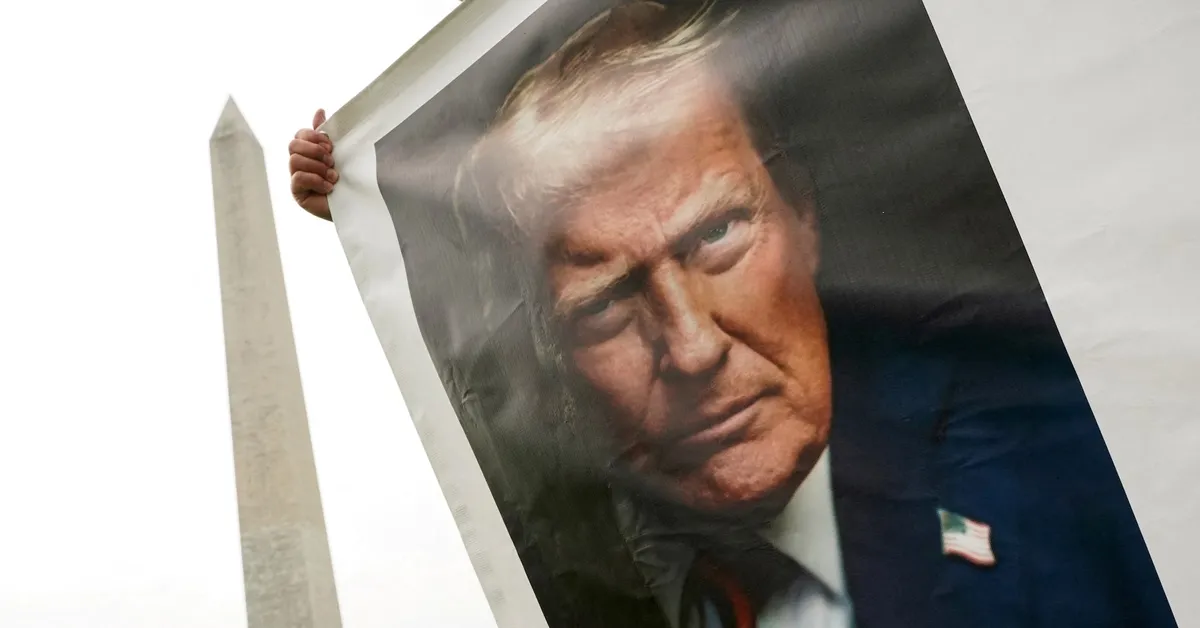
On June 14, a significant wave of protests swept across major U.S. cities, including New York, Atlanta, and Los Angeles. Tens of thousands of Americans gathered to voice their opposition to President Donald Trump's aggressive policies, marking the largest demonstration against his presidency since his return to power in January. The protests coincided with a military parade in Washington, D.C., celebrating the U.S. Army's 250th anniversary, and were overshadowed by the tragic assassination of a Democratic lawmaker in Minnesota.
Interestingly, the protests took place on Trump’s 79th birthday, a day that saw the deployment of National Guard troops and U.S. Marines to Los Angeles, a heavily Democratic city. This military presence has faced legal challenges from California Governor Gavin Newsom. Anti-Trump groups organized nearly 2,000 demonstrations across the country under the unifying theme of "No Kings", which emphasizes that no individual is above the law.
In the wake of the assassination of a Democratic lawmaker, all planned "No Kings" protests in Minnesota were canceled. Minnesota Governor Tim Walz described the shooting as politically motivated, while Democratic U.S. Senate Minority Leader Chuck Schumer condemned the violence as an act of political extremism that threatens the very fabric of democracy. Trump himself responded to the shooting, declaring that such horrific violence will not be tolerated in the United States.
As people flocked to Washington for the military parade, they encountered an unprecedented security presence. Streets were cordoned off with 18.5 miles of 8-foot-high black fencing, reinforced with concrete barriers, surrounding iconic landmarks like the Washington Monument. The cost of the celebrations is estimated to be between $25 million and $45 million, raising questions among critics who view the parade as a wasteful display of power, especially as Trump pushes for federal budget cuts.
In Los Angeles, a festive atmosphere prevailed outside City Hall as hundreds gathered for the main "No Kings" protest. A vibrant drum circle featuring Native American dancers energized the crowd, with many waving American and Mexican flags amidst a strong law enforcement presence. Participants like Sergio Lopez, a Navy veteran, expressed feelings of being under attack and emphasized the importance of protecting the rights of immigrants who contribute to the nation’s fabric.
The protests were not confined to major cities. Small groups of mostly middle-aged and elderly individuals also demonstrated in affluent neighborhoods of northwest Washington and Maryland, urging motorists to honk in support with signs proclaiming “Honor Troops (not Trump)” and “No Kings since 1776.” The organization RefuseFascism.org secured a permit for a march in central Washington that culminated in a rally opposite the White House, despite Trump’s warnings against protesting at the parade.
At the Atlanta protest, members of the far-right Proud Boys appeared, wearing their distinctive black and yellow colors. The juxtaposition of these protests against the backdrop of the military parade highlighted the polarized political climate in the U.S. The Army’s celebration aimed to honor various eras of military history with uniforms and weaponry from those times, despite potential thunderstorms forecasted for the evening.
Military parades are a rare spectacle in the United States, often reserved for marking significant victories or showcasing military strength. The last similar parade took place in 1991 to celebrate the victory in the Gulf War. This year, nearly 7,000 troops, along with various military vehicles — including M1 Abrams tanks and Apache helicopters — will participate in the event, which is expected to draw significant law enforcement presence and aerial surveillance.
As the nation grapples with political tension and a divided public, the protests and the military parade serve as stark reminders of the current state of American democracy and civic engagement.